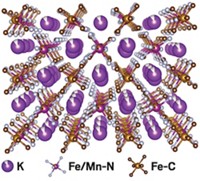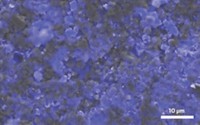Advertisement
Grab your lab coat. Let's get started
Welcome!
Welcome!
Create an account below to get 6 C&EN articles per month, receive newsletters and more - all free.
It seems this is your first time logging in online. Please enter the following information to continue.
As an ACS member you automatically get access to this site. All we need is few more details to create your reading experience.
Not you? Sign in with a different account.
Not you? Sign in with a different account.
ERROR 1
ERROR 1
ERROR 2
ERROR 2
ERROR 2
ERROR 2
ERROR 2
Password and Confirm password must match.
If you have an ACS member number, please enter it here so we can link this account to your membership. (optional)
ERROR 2
ACS values your privacy. By submitting your information, you are gaining access to C&EN and subscribing to our weekly newsletter. We use the information you provide to make your reading experience better, and we will never sell your data to third party members.
Energy
Flexible batteries get safe aqueous electrolytes
Biocompatible devices could safely power wearable and implantable medical devices
by Stu Borman
August 11, 2017

Most batteries that power wearable and implantable medical devices are rigid and don’t move with the body. Researchers are developing flexible batteries and energy-storing supercapacitors to overcome that limitation. However, current ones use electrolytes containing strong acids and bases or toxic and flammable organic solutions. If these materials leaked in or on the body, they could cause harm.
Researchers in China have now created bendable sodium-ion batteries (SIBs) with biologically friendly aqueous electrolytes (Chem 2017, DOI: 10.1016/j.chempr.2017.05.004).
Yonggang Wang, Huisheng Peng, and coworkers at Fudan University built batteries with a Na0.44MnO2 cathode and a carbon-coated NaTi2(PO4)3 anode in contact with a sodium-ion solution. The team tested a variety of biologically friendly solutions as battery electrolytes: sodium sulfate; intravenous saline solution; and a cell-culture medium containing amino acids, sugars, vitamins, and a sodium salt.
The researchers made two different shapes of batteries. In a belt-shaped battery, the cathode and anode sandwich an electrolyte-soaked separator. And a fiber-shaped battery has carbon nanotube electrodes embedded with cathode and anode nanomaterials and surrounded by sodium-ion electrolyte. Both SIB designs have charge capacities and power outputs per unit volume that are comparable to those of previously reported flexible lithium-ion batteries and supercapacitors.
Lithium-ion battery expert Haoshen Zhou of the National Institute of Advanced Industrial Science & Technology in Japan points out that the batteries are the first flexible ones to use biocompatible sodium solutions as electrolytes. However, “the work is still at the lab stage, and technological improvements are needed for practical applications,” Zhou adds.
The researchers haven’t yet tested the batteries with actual medical devices. Although the devices’ power output per unit volume is moderate, their power output per unit mass is low because the electrode materials have low current capacities. And the devices’ maximum operating voltage is 1.6 volt, about half that of some batteries containing organic electrolytes.
“Low voltage is an inherent drawback of safe, aqueous batteries,” Wang says. He notes that additional work, such as finding higher-capacity electrode materials, will be needed to make the new flexible battery design commercially practical.





Join the conversation
Contact the reporter
Submit a Letter to the Editor for publication
Engage with us on Twitter